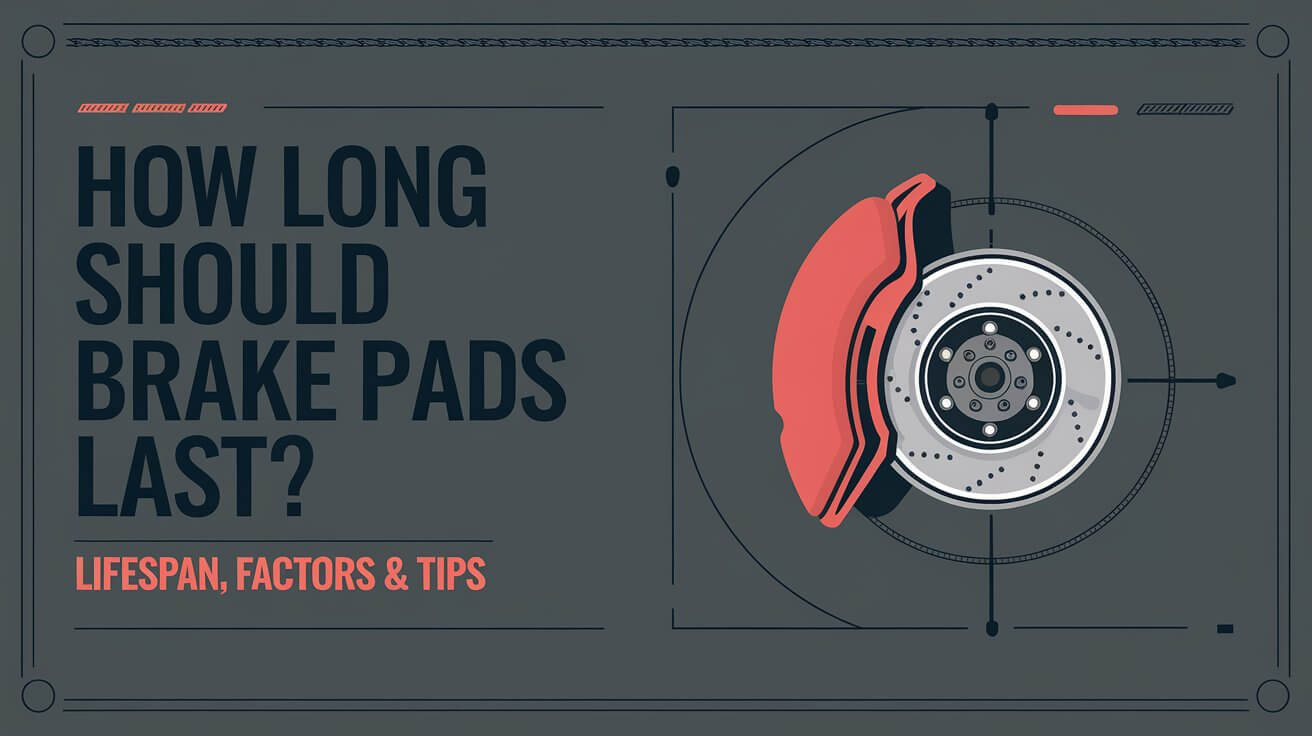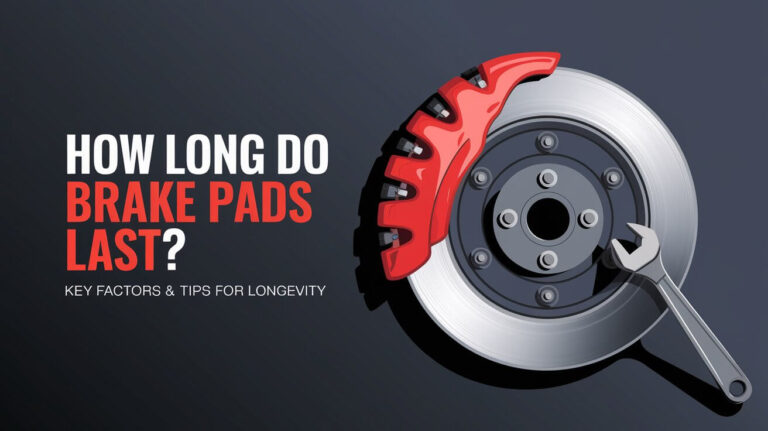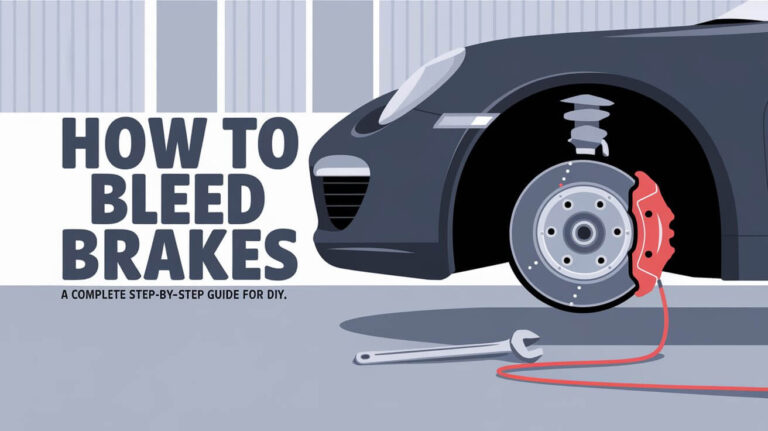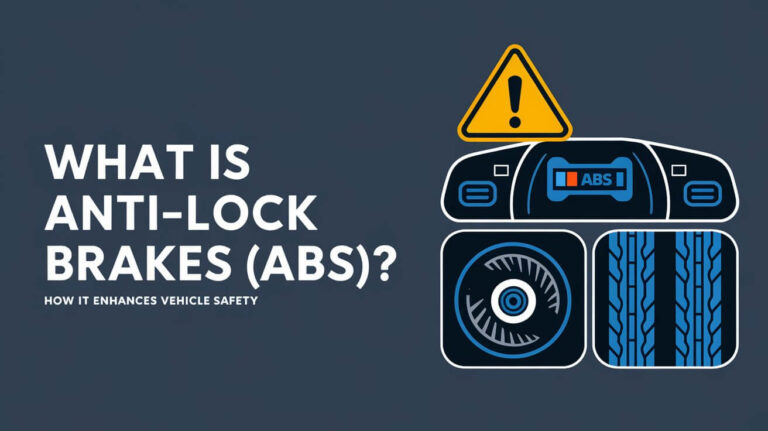How Long Should Brake Pads Last? Lifespan, Factors & Tips

When it comes to your vehicle’s safety, few components are as crucial as the brake pads. These small but mighty parts are what bring your car to a stop, making them essential for safe driving. But how long should brake pads last? The answer isn’t a simple one-size-fits-all. On average, brake pads can last anywhere from 25,000 to 70,000 miles, but several factors, such as driving habits, road conditions, and the type of brake pads, influence this range.
The Average Lifespan of Brake Pads
How Many Miles Can Brake Pads Last?
The lifespan of brake pads varies based on several factors, including the type of brake pads and the driving conditions. Generally, brake pads fall into three categories: organic, semi-metallic, and ceramic.
- Organic Brake Pads: These are made from non-metallic materials like rubber, carbon, and fiberglass. They tend to wear out the quickest and last between 25,000 to 40,000 miles. They are a great choice for light vehicles and less aggressive driving but may not last as long in more demanding conditions.
- Semi-metallic Brake Pads: These brake pads contain metal, which helps dissipate heat better than organic pads, offering a longer lifespan of 40,000 to 50,000 miles. However, they can be noisier and create more brake dust.
- Ceramic Brake Pads: Known for their durability, ceramic brake pads can last up to 70,000 miles or more. They are quieter, produce less dust, and handle high temperatures well, but they come with a higher price tag. These are often used in high-performance vehicles where braking is essential.
On average, you can expect most brake pads to last around 45,000 miles, but this will vary based on driving habits and the environment in which you drive.
What Affects the Lifespan of Brake Pads?
There are several factors that can influence how long your brake pads last:
- Driving Style: Aggressive braking, rapid acceleration, or constant stop-and-go city driving will wear out brake pads faster. If you drive calmly and avoid unnecessary braking, your pads can last longer.
- Vehicle Weight: Heavier vehicles, such as trucks or SUVs, require more stopping power, which can reduce the life of your brake pads. Towing heavy loads also increases wear.
- Road Conditions: If you drive in mountainous or hilly terrain, you’ll use your brakes more frequently, shortening their lifespan. In contrast, highway driving is much gentler on brake pads.
Factors That Impact Brake Pad Wear
Driving Habits and Their Impact
How you drive has a direct effect on the longevity of your brake pads. If you’re heavy on the brakes, especially in city traffic where stopping is frequent, your brake pads will wear out faster. On the other hand, driving on highways with minimal braking allows the pads to last much longer.
When you brake hard, the friction between the pad and rotor increases dramatically, causing the pad to heat up and wear faster. By adjusting your driving style—like anticipating stops and slowing down gradually—you can significantly extend the life of your brake pads.
Road and Weather Conditions
Road conditions also play a role. Driving in steep or mountainous regions will demand more from your brakes, leading to quicker wear. In icy or wet conditions, you may use your brakes more often, which can also reduce their lifespan. Additionally, dirt and debris on the road can get caught in the brake system, causing the pads to wear unevenly or faster.
The Role of Vehicle Type and Use
The type of vehicle you drive matters as well. Larger vehicles like SUVs and trucks place more stress on brake pads due to their weight, especially when towing or carrying heavy loads. These vehicles often require more frequent brake pad replacements than smaller, lighter cars.
Different Types of Brake Pads and Their Longevity
Choosing the right brake pads for your vehicle can also impact how long they last. Here’s a closer look at the different types:
Organic Brake Pads
Organic pads are made from materials like carbon, rubber, and resin. They are typically quieter and softer, which makes them a good choice for daily driving and lighter vehicles. However, their softness makes them wear out more quickly, with a typical lifespan of 25,000 to 40,000 miles.
Semi-metallic Brake Pads
These pads contain metallic fibers mixed into the pad material, which improves heat dissipation and durability. Semi-metallic pads last longer than organic pads and can handle higher temperatures, making them ideal for performance or heavy-duty vehicles. Their lifespan generally falls between 40,000 to 50,000 miles, but they are noisier and produce more brake dust.
Ceramic Brake Pads
Ceramic pads are made from a durable ceramic compound that offers superior performance, especially under high-temperature conditions. They are quieter, produce less dust, and can last up to 70,000 miles or more. While they are more expensive than other types of pads, their longevity and performance often make them worth the investment for drivers looking for long-lasting, high-quality pads.
Signs Your Brake Pads Need Replacing
Knowing when to replace your brake pads is essential for your safety. Here are some signs to watch for:
Squealing or Screeching Noises
Most modern brake pads come with wear indicators—a small metal tab that makes a squealing noise when the pads are worn down. If you hear this noise consistently while braking, it’s time to inspect your brake pads and consider replacing them.
Grinding Sounds
A grinding or scraping sound is much more serious. This noise usually means that the pads are completely worn out, and the metal backing plate is rubbing against the rotor. At this point, not only will you need to replace the brake pads, but the rotor may also be damaged, leading to more costly repairs.
Pedal Vibration and Longer Stopping Distance
If you feel vibrations or pulsing in the brake pedal when you press down, it could be a sign that your brake pads are warped or unevenly worn. This can reduce braking efficiency and should be addressed immediately. Similarly, if you notice that your car takes longer to stop, the brake pads may be too worn to function effectively.
When and How to Inspect Your Brake Pads
Regular inspections of your brake pads can prevent costly repairs down the line. Here’s how to check them:
Visual Inspection Methods
Brake pads are located inside the caliper, and you can often check their thickness without removing the wheel. New brake pads are typically between 8 to 12 mm thick. If they are worn down to 3 mm or less, they need to be replaced immediately. Driving with extremely thin pads increases the risk of brake failure.
Use of Brake Pad Sensors
Many modern vehicles are equipped with brake pad wear sensors. These sensors trigger a warning light on your dashboard when the pads reach a certain level of wear. If your car has this feature, it provides a convenient way to know when it’s time for new pads. However, keep in mind that once the sensor is triggered, you may need to replace both the pads and the sensor itself.
How to Extend the Life of Your Brake Pads
While brake pads naturally wear down over time, there are ways to prolong their lifespan:
Adjust Driving Habits
One of the easiest ways to extend the life of your brake pads is to adjust your driving habits. Avoid hard braking whenever possible. Instead, anticipate stops and slow down gradually. This reduces the amount of friction applied to the brake pads, helping them last longer.
Reduce Vehicle Weight
The heavier your vehicle, the harder your brakes have to work to bring it to a stop. Reducing excess weight by removing unnecessary items from your car can help reduce wear on your brake pads. This is especially important for drivers of larger vehicles like trucks and SUVs.
Engine Braking
In manual vehicles, engine braking—using the engine to slow down by downshifting—can reduce the stress on your brake pads. By relying on the engine rather than the brakes, you minimize wear. However, be cautious not to overdo it, as improper downshifting can damage your transmission.
Maintenance Tips for Prolonging Brake Pad Life
Regular Brake Inspections
Routine inspections are key to maintaining your brake system. Check your brake pads every 5,000 to 10,000 miles or whenever you have your tires rotated. This allows you to catch wear early and replace pads before they cause damage to other parts of the braking system.
Use High-Quality Brake Fluid
Brake fluid plays an important role in the overall efficiency of your brake system. Using high-quality brake fluid helps maintain the performance of your brake pads and prevents overheating. Low-quality fluids may evaporate more quickly, reducing the braking system’s effectiveness and increasing wear on the pads.
The Cost of Replacing Brake Pads
The cost of replacing brake pads can vary based on several factors, including the type of vehicle, the type of brake pads, and labor costs.
Price Ranges for Different Types of Pads
- Organic Brake Pads: These are typically the least expensive, costing between $50 to $100 for a complete set of pads.
- Semi-metallic Brake Pads: These pads are moderately priced, usually ranging from $70 to $150.
- Ceramic Brake Pads: Ceramic pads are the most expensive option, with prices ranging from $100 to $200 or more.
Labor Costs and Factors That Affect Replacement Costs
Labor costs for replacing brake pads can vary widely depending on your location and the type of vehicle you drive. On average, labor can cost anywhere from $100 to $300, depending on the complexity of the brake system.
FAQs on Brake Pad Lifespan
How Often Should You Replace Brake Pads?
While most brake pads last between 25,000 and 70,000 miles, the exact timing depends on your driving habits, vehicle type, and the type of brake pads you use. It’s a good idea to have them inspected every 5,000 to 10,000 miles to ensure they are wearing evenly and functioning properly.
What Happens If You Don’t Replace Worn Brake Pads?
Failing to replace worn brake pads can lead to severe consequences. Once the pads are completely worn down, the metal backing plate will begin to grind against the rotor, causing damage. This can result in more expensive repairs, including the replacement of the rotors or even the entire brake system. Additionally, driving with worn-out brake pads significantly reduces your vehicle’s braking efficiency, increasing your stopping distance and putting you at greater risk of accidents.
Conclusion
The lifespan of your brake pads depends on a variety of factors, including the type of pads, your driving habits, and the road conditions in which you drive. While brake pads can last anywhere from 25,000 to 70,000 miles, it’s essential to stay vigilant and inspect them regularly. Pay attention to signs of wear, such as squealing or grinding noises, and replace your brake pads when necessary to maintain your vehicle’s safety and performance.
By driving mindfully, keeping your vehicle well-maintained, and choosing the right type of brake pads for your driving needs, you can ensure that your brake pads last as long as possible. Whether you prefer the affordability of organic pads or the longevity of ceramic ones, regular maintenance and responsible driving will help you get the most out of your brake system.



